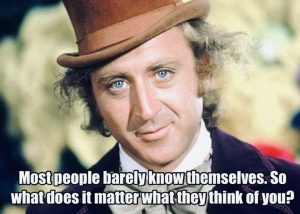
COVID-19 Digital Certificate Legal Notice

The REAL Anthony Fauci with Robert F. Kennedy, Jr.
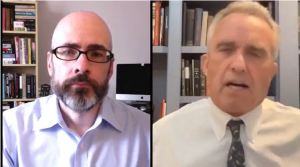
Joining us today to talk about his new bestselling book, The Real Anthony Fauci, is Robert F. Kennedy, Jr. of ChildrensHealthDefense.org.
This new ultra-compact camera is the size of a grain of salt and takes stunning photos
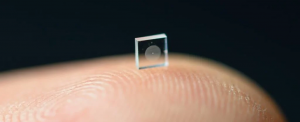
The salt-grain-sized camera.
Scientific ingenuity means cameras keep on getting smaller and smaller, and the latest to appear is not only incredibly tiny – the same size as a grain of salt – it’s also able to produce images of much better quality than a lot of other ultra-compact cameras.
Using a technology known as a metasurface, which is covered with 1.6 million cylindrical posts, the camera is able to capture full-color photos that are as good as images snapped by conventional lenses some half a million times bigger than this particular camera.
FDA Misled By Pfizer
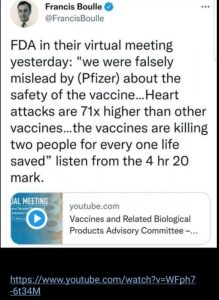
Spread of Spanish Flu Was Never Experimentally Confirmed
“Perhaps, if we have learned anything, it is that we are not quite sure what we know about the disease.”
Puzzling Human Studies
The landmark study of Milton J. Rosenau, MD, “Experiments to Determine Mode of Spread of Influenza,” was published in the Journal of the American Medical Association in 1919.
- They isolated microbial mixtures from the throat and noses of carefully selected influenza cases from an outbreak location. The researchers then administered these to 10 young U.S. navy volunteers without prior exposure to influenza. None fell sick.
- They drew blood from influenza patients and transferred it to the navy volunteers. None fell sick.
- They collected influenza patients’ mucous membranes with swabs and filtered them to exclude larger microbes like bacteria. They then injected the filtrate into the navy volunteers. None fell sick.
- They brought the navy volunteers to meet influenza patients. They shook hands and conversed. The patients also exhaled (as hard as possible) onto the volunteers’ face for five times. Then the patients cough directly onto the volunteers. None fell sick.
In case these ten navy volunteers were somehow immune, though unlikely as they had no prior influenza exposure, the study recruited another set of 50 volunteers. They repeat the experiment with influenza patients from another outbreak location, but could not prove human-to-human transmission. And, intriguingly, one physician involved in the study contracted influenza.
“I think we must be very careful not to draw any positive conclusions from the negative results of this kind. Many factors must be considered. Our volunteers may not have been susceptible. They may have been immune,” Dr Rosenau addressed. “We entered the outbreak with a notion that we knew the cause of the disease, and were quite sure we knew how it was transmitted from person to person,” he concluded. “Perhaps, if we have learned anything, it is that we are not quite sure what we know about the disease.”
Other eight human experiments, documented in “Experiments Upon Volunteers to Determine the Cause and Mode of Spread of Influenza, Boston, November and December, 1918,” also failed to confirm how the Spanish flu spread. “Our failure, however, to reproduce the disease with these discharges suggests that there may be unknown factors involved, either in the discharge of the virus from the body, or in its entrance into the victim, or both,” the document ended.
“Perhaps, if we have learned anything, it is that we are not quite sure what we know about the disease.”
Reviewing these studies, John M. Eyler, PhD in the historical science at the University of Minnesota, said in a 2010 paper: “It seemed that what was acknowledged to be one of the most contagious of communicable diseases could not be transferred under experimental conditions.”
Possible Explanations Are Unconvincing
Some argue that participants in those studies were already immune. This is rather unlikely, however, as the volunteers recruited had no prior exposure to influenza. As a 2008 review wrote: “While possible, none of the volunteers reported symptoms in 1918, even a fever.” If the volunteers were indeed immune, an initial infection must happen first to generate adaptive immunity that ‘remembers’ the Spanish flu virus. But, again, the volunteers were never symptomatic.
Another reason could be that the influenza patients had passed the infectious phase. This possibility, too, is dubious as Dr Rosenau ensured that influenza patients examined were in their first three days of illness, the period where virus shedding peaks.
Could the participants never contract the Spanish flu virus? Even though no technology could confirm virus diagnosis at that time, “we doubt U.S. Public Health Service physicians had much trouble making an accurate clinical diagnosis of influenza in 1919,” the 2008 review added. Maybe the sick could not transmit the Spanish flu virus to the healthy? Equally improbable as countless healthy people fell sick with the flu at that time.
We’ll Probably Never Know the Answer
The Spanish flu virus eventually disappeared, only to be resurrected in 2005 for animal experimentations to understand its mechanism of virulence. And, indeed, the Spanish flu is a unique influenza virus. “No other human influenza viruses tested were as exceptionally virulent,” the CDC stated. “In that way, the 1918 virus was special — a uniquely deadly product of nature, evolution and the intermingling of people and animals.”
As human infection experiments are no longer ethical and require extensive enrollment procedure, scientists may never solve why experimental human-to-human transmission of the Spanish flu could not be achieved. At least the human studies showed that human contact alone does not explain the Spanish flu pandemic. Underlying factors are likely at play. Evidence has suggested that a tuberculosis co-infection might be a prerequisite to a severe flu infection during the 1918 pandemic. Or perhaps animals were the main culprit in driving the 1918 flu transmission.
https://medium.com/microbial-instincts/spread-of-spanish-flu-was-never-experimentally-confirmed-9f91b37c4dd8
NSW and Vic Deaths

Greg Hill
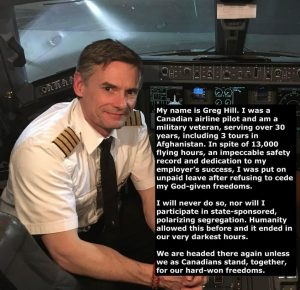
An honest man speaks the truth about the greatest danger our civilization faces at present. We need to stand strong against global tyranny. His is a great example to follow.
Love Is Not What You Say

Bette Midler Honoured

Bette Midler Honoured
“I’m no fool—I brought a hanky ’cause I knew it was going to get very, very emotional. Because this is something that, you know it’s a kind of, you sort of sit at home and you watch these shows. And you think ‘Well, what about me?’ You know? (laughing) And you can’t help it! You’re a human being.
I want to say that there’s this David Byrne song—you all know it! …Most of you know it. (speaking lower) Maybe a *few* of you know it. ‘You may find yourself living in a shotgun shack. You may find yourself behind the wheel of a large automobile. And you say to yourself “this is not my beautiful house, this is not my beautiful wife. How did I get here?”’ How did I get here? I have absolutely no earthly idea how I got here. I really don’t.
I came from nothing. I came from the most isolated place in the United States: Hawaii. And I spent most of my time reading books in libraries. And I had a mediocre education. But somehow or another I was mesmerized by the idea that someone would get up in a pool of light and be completely and utterly transformed. And transfigured. And beautiful. And that, when the light hit them, they had something not just to say—but something to reveal.
And I remember when I was a kid I saw Édith Piaf on television, and I saw her… I think it was the first time I’d ever seen a human being do what she did. Which was to completely unzip her skin and show her soul. And I… I never really recovered from it. I really felt that I understood what that was. And that I could do it.
And subsequently in my life, I saw many people do it. People that I learned to love. I saw Tina Turner, I saw Aretha, I saw Janis Joplin. I saw so many people, so many men, so many women. And I fell in love with them, and I fell in love with the idea of what they did.
And I have to say, when I say ‘How did I get here?’ I say it because I… I… I never looked up. I had my nose to the grindstone every moment of my life. I worked like a f—- animal. I did. I worked like an animal. I couldn’t help myself. I was compelled to work. I was simply compelled. And now that I’m older, sometimes I think ‘Was it the hormones? Was it a dream? Was I just swept up in some vast illusion? What *was* it?’ Because now I’ve slowed down and I look back.
But I have to say that it was—talk about “Mr. Toad’s Wild Ride”—it was a hell of a ride. I had a blast. Even though it was work, it was work that I loved with all my heart. And it was work that brought me into contact with the most brilliant minds and the most wonderful wits and the most brilliant music. Things that made my heart soar and my heart sing. So even though I had my nose down, I heard it all, I saw it all, and I loved it all. And I have to say thank you so much to the Kennedy Center for validating this insane dream that I had when I was just a kid. I thank you from the bottom of my heart.”—#BetteMidler, 44th #KCHonors recipient
